It’s no secret.
Sales people struggle with generating new leads.
Long gone are the days when you could pick up the phone, make a few cold calls to reach a new prospect and land a meeting or demo.
If you try cold calling today, it takes, on average, at least 8 phone calls.
And when you reach them, do you know what happens?
They don’t want to talk to you!
In fact, more than 90% of executives never respond to or buy from cold calls.
It’s safe to say that as sales people, we have our work cut out for us.
Given these challenges, how can we stand out? How can we generate more leads?
We do this through social selling.
What is social selling?
Social selling is when sales people use social media to find and engage with new prospects. Sales people use social media to provide value to prospects by answering open-ended questions, responding to comments and by sharing content throughout the buying process – from awareness to consideration, until a prospect is ready to buy.
Social selling is the new sales model or sales 2.0.
Want further proof?
Across several major industries, more than 50% of revenue comes from social selling alone.
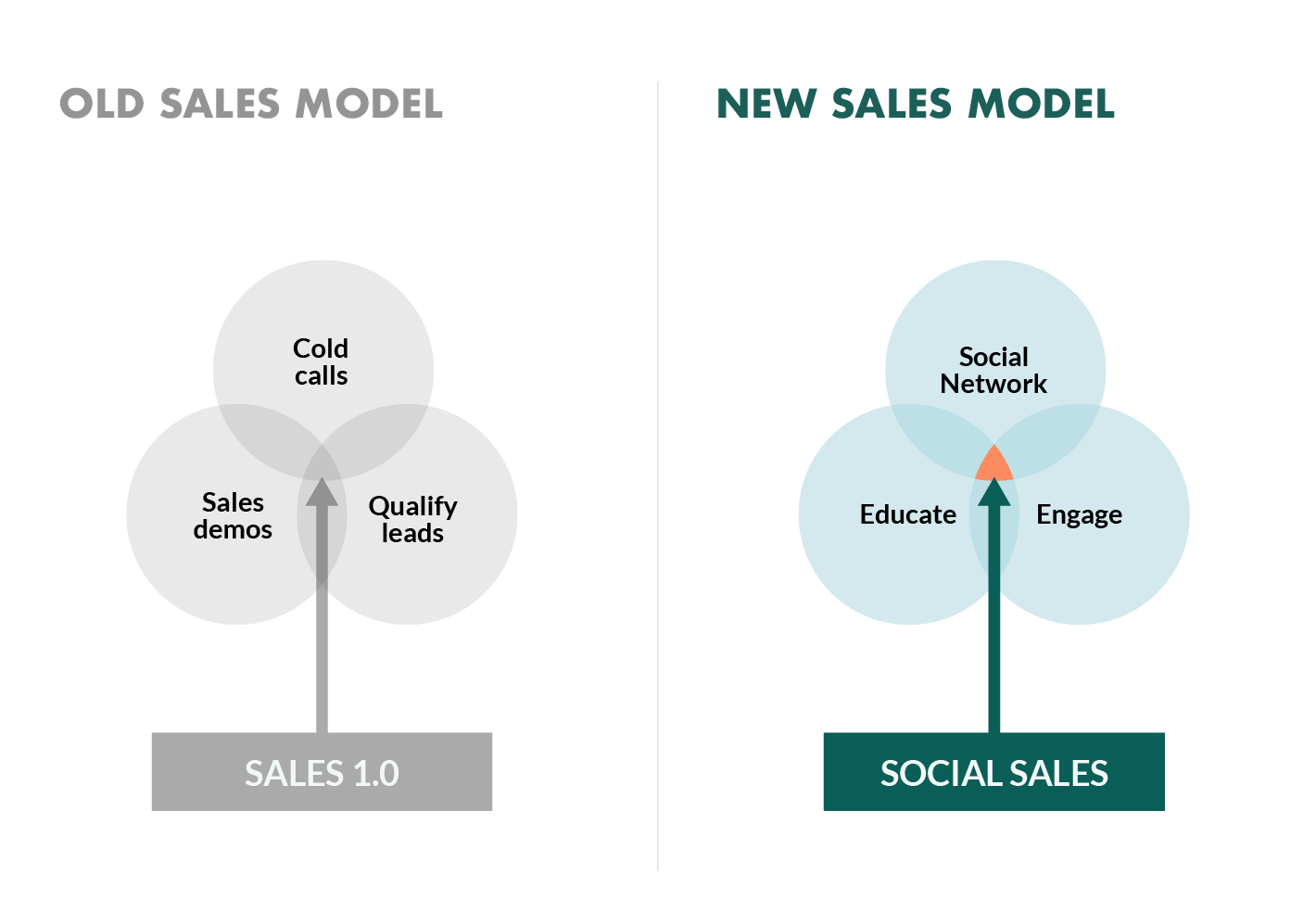
While the old sales model used to be about cold calling, sales demos and qualifying leads, the new way of B2B sales means using social media networks to reach new prospects, educate them on how your company can help them grow their business, and nurture them through content.
The growth of social media usage has been a huge factor in why social selling has been adopted and several studies point toward the B2B buyer using social media as an important part of their research process.
Accenture’s State of B2B Procurement Study finds that 94% of B2B buyers conduct some degree of research online before making a business purchase, with 55% conducting online research for at least half of their purchases.
And what channels do B2B buyers use for research?
Yes, you guessed it. It's social media.
Research by IDC has found that;
- 91% of B2B buyers are now active and involved in social media
- 84% of senior executives use social media to support purchase decisions
- 75% of B2B buyers are significantly influenced by social media
Furthermore, 76% of B2B buyers are ready to have sales conversations on social platforms.
It’s not just a shift in the B2B buying process that has changed.
The age of B2B buyers, and more importantly decision makers, has changed too.
A study by Google and Millward Brown Digital found that 46% of decision makers are now aged between 18 and 34 years old (up from 27% in 2012), which coincidentally, is the largest social media user demographic.
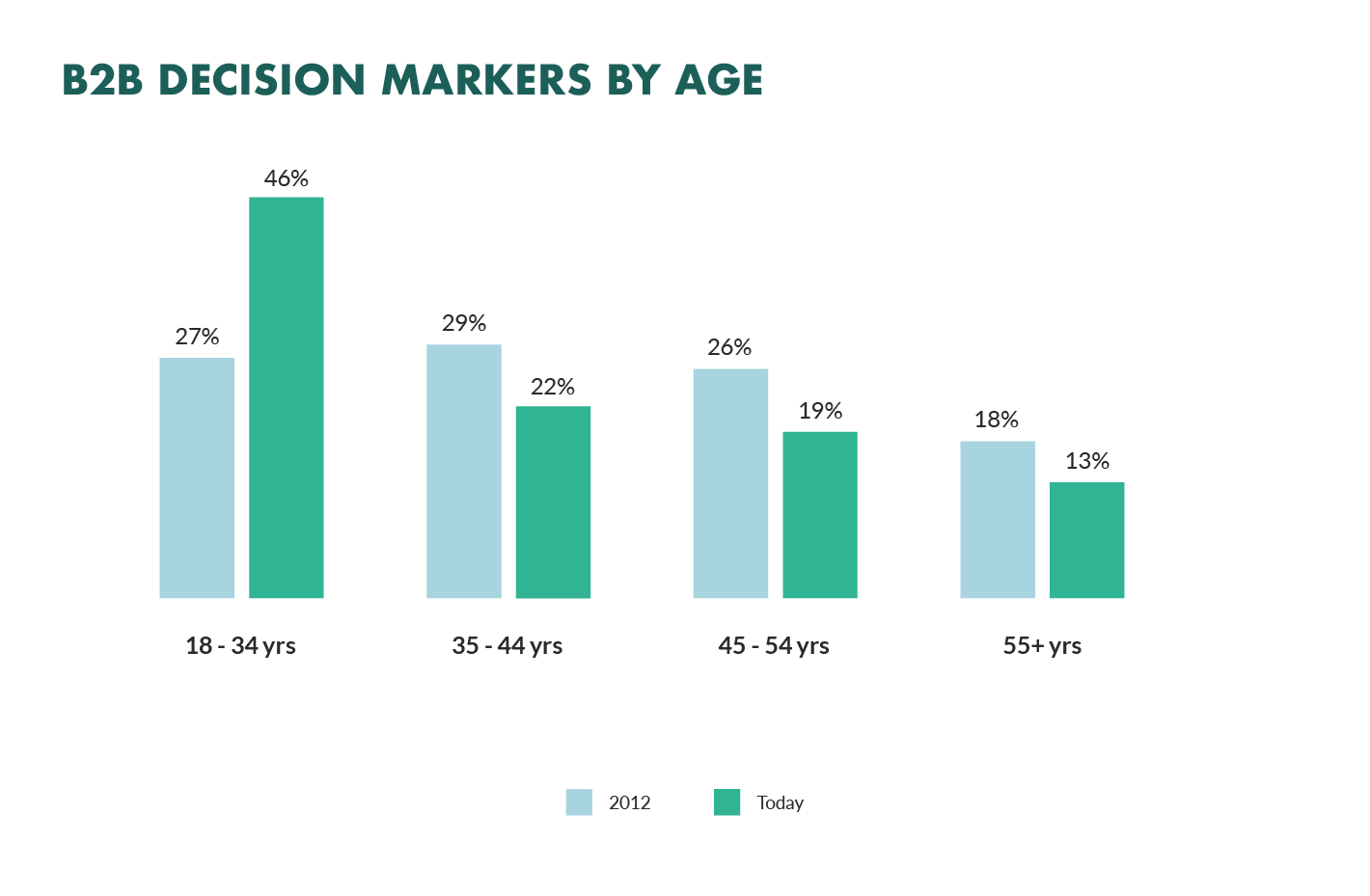
We can expect this pace to continue and that decision-making millennials (buyers aged between 18 and 34) will count for the majority share in the near future.
So what are the benefits of social selling?
How social selling can grow your business
Jamie Shanks from Sales for Life shared his key findings in a social selling study of more than 45,000 sales reps and 200 companies. What he found was this:
For every $1 invested in social selling, the ROI is $5.
That’s right!
Every dollar invested in social selling resulted in a five dollar return.
Furthermore, Aberdeen Group released a study on the impact of social selling.
The study found that when you look at all sales KPIs (key performance indicators) – quota attainment, renewal rate and forecast accuracy - all these metrics are better when sales reps used social media (as shown below).
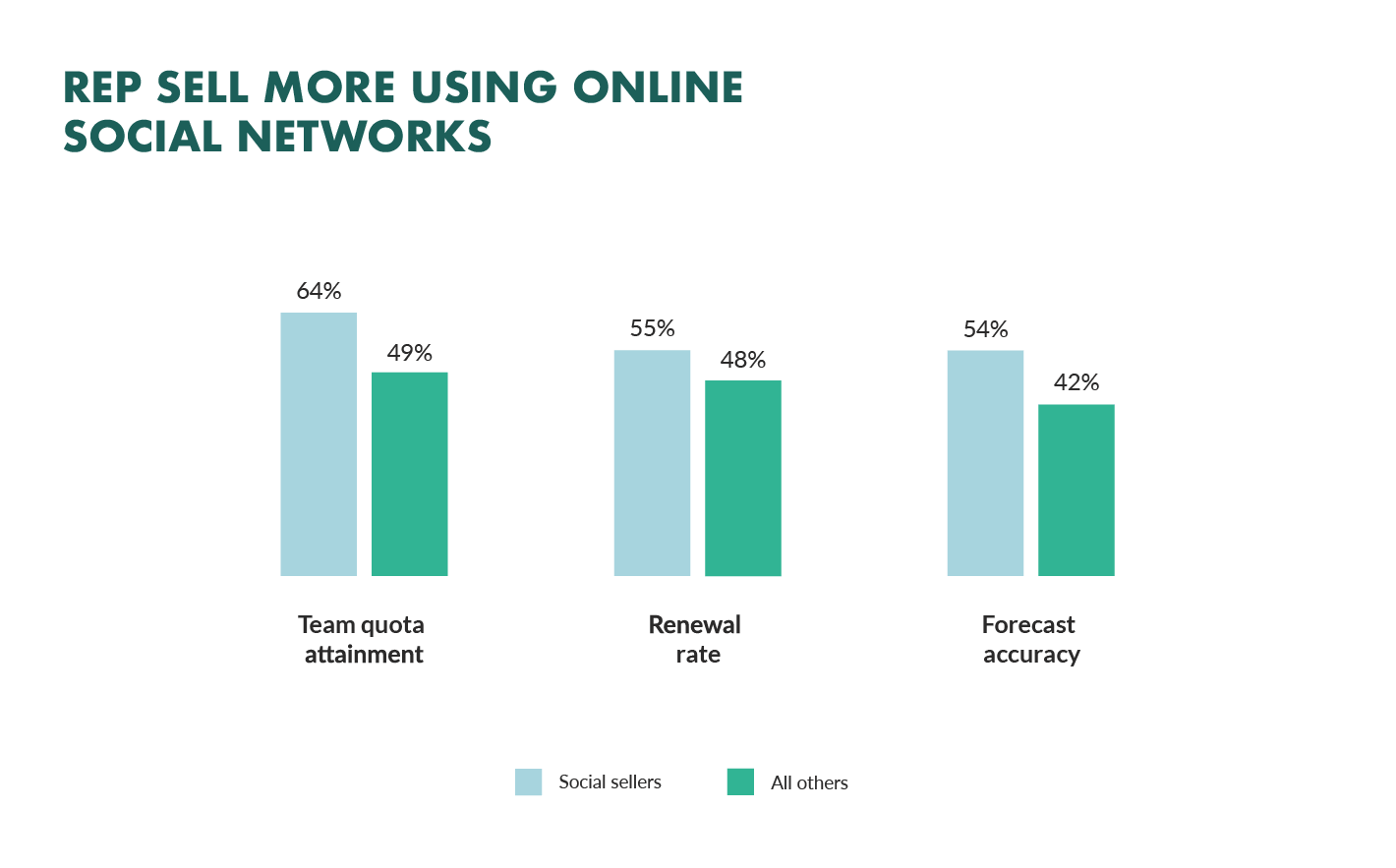
The research also found that sales reps who use social selling find on average 45% more opportunities. In addition, social selling helps best-in-class companies achieve a 16% gain in year-over-year revenue.
That’s four times better than companies that don’t use social selling.
The key findings are clear: Sales reps sell more when they use social networks.
And this is why social selling is the third most important priority for sales teams this year.
Further benefits of social selling include:
- An increased number of leads
- Improved conversion rate
- Shorter sales cycles.
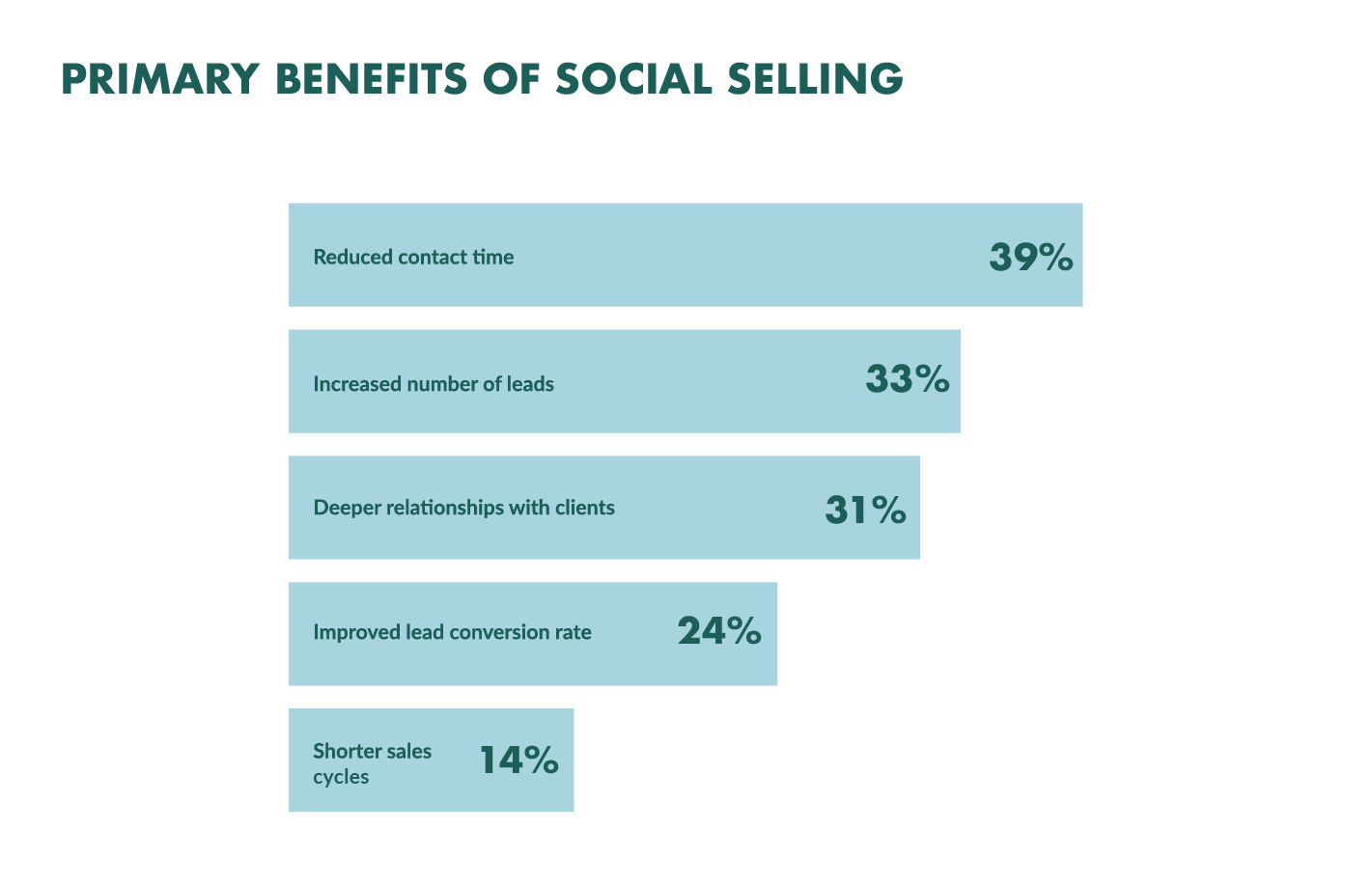
But, here's the thing:
Only 1 in 4 sales reps know how to use social media for sales.
So, how can your business adopt a social selling strategy?
Fear not!
We’ve got you covered with 10 actionable social selling tips!
Best of all, these 10 tips are all in line with GDPR.
10 Ways to get started with social selling
Social selling is ultimately about building relationships. But, before you build them, you need to make sure you choose the right network. Then, you can build new relationships, provide value to prospects and nurture leads.
Now, I like to practice what I preach, so I've used all of the tactics below and they really work.
Earlier this year, I made a full comitment to social selling and have been actively testing strategies, analyzing data and monitoring trends in how people connect with, learn from and buy from people who are considered experts in their industry. It's fascinating to watch, and even more fascinating to see it work in action.
I highly recommend you try this yourself. Commit to being active for at least 6 months without any expectations and you too, will see how effective social selling can be for your business.
Ready? Let’s get started!
1. Choose the most relevant social network
It’s easy to get caught up in the next big social network, but the true winners of social selling are sales people that are active on the same platform as their potential customers. This is the foundation to social selling success.
It’s why sales people in fashion excel on Pinterest and why B2B sales reps generate leads from LinkedIn.
So where do you start?
You start by identifying the social networks that match your potential customer:
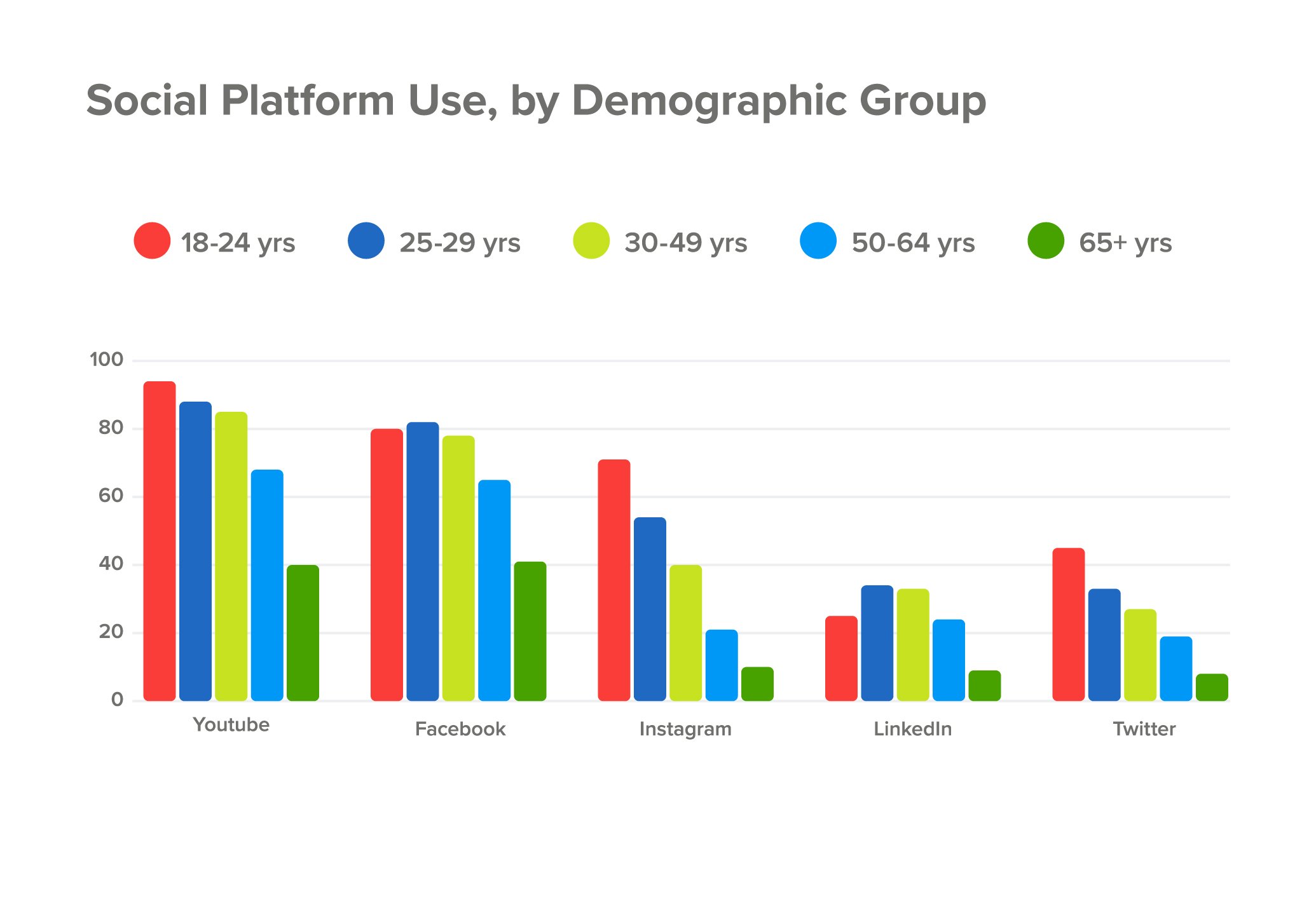 While YouTube and Facebook have the lion share of all age groups, Forrester Research has found that decision makers primarily use Twitter and LinkedIn.
While YouTube and Facebook have the lion share of all age groups, Forrester Research has found that decision makers primarily use Twitter and LinkedIn.
So if you’re selling products that appeal to teenagers, you should use Facebook and Instagram. And if you sell products or services aimed towards businesses and decision makers, then use LinkedIn or Twitter.
With a user base of more than 750 million members, many of your customers will already have an account on LinkedIn, so it's worth exploring LinkedIn as one of your social platforms.
2. Follow the right Twitter users
To build your network, use a tool like Followerwonk.
Followerwonk allows you to search Twitter profiles by topic or keyword and that provides you with a list in order of top rated Twitter users. For example, you can begin your search with “CRM”, “Sales” and “Marketing”.
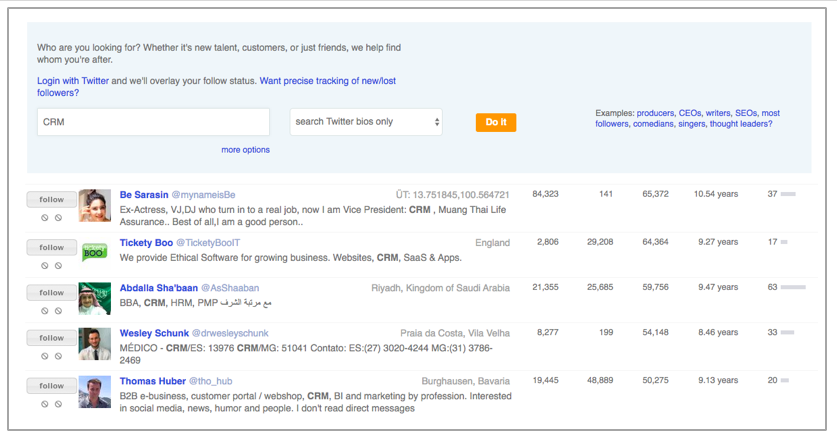
By using Followerwonk, you can follow multiple Twitter users quickly rather than visiting and requesting to follow on each individual profile, which can be time consuming. Or, you can export the list of users and then filter through to the more relevant profiles.
3. Create a wish list of companies and follow them
Do you ever dream about signing a mega-brand as a new client?
I know I do.
Well, it doesn’t have to be just a dream.
Small businesses to large corporations can be found on Twitter, Facebook and LinkedIn through company profiles or accounts. By following these companies, you can keep up to date on company news, such as when they win an award (you can send them a “Congrats!” message) or when they ask for product recommendations (you can send them an invite to a demo).
If you're a marketer, this is pretty much the same approach you would take with your account-based marketing strategy.
Here's what you can do:
Create a wish list of 10-20 dream companies that are active on social media and start following them today. Like, retweet and engage with their status updates whenever possible. It might not be a dream for much longer!
4. Get instant notifications when prospects join LinkedIn
By using LinkedIn’s Saved Search feature, you can create a search based on your ideal customer profile, and then LinkedIn will notify you each time a new sign up matches that profile.
To do this, perform a search using the LinkedIn search field found at the top of LinkedIn when you login, enter the criteria that matches your ideal customer profile, such as job title, or industry and then click the search button.

At this point, you will find that the results will return people who you are already connected to. To remove your first level connections, click the "Connections" tab underneath the search function, check the box, "2nd" and click "Apply".
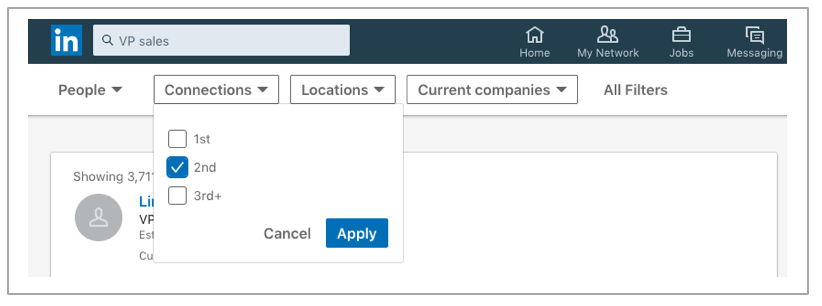
Second level connections mean that you know someone in common, which makes it much easier to get introduced to a prospect.
Next, move the cursor the right hand side of the page and click "Create a Search Alert".
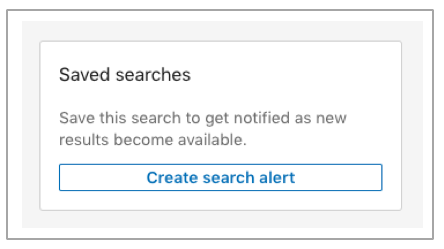
LinkedIn will then ask you to select how often you wish to receive notifications (weekly) and in what format (email).
Inviting second degree connections is something I've been doing more of lately and it's a really great way to grow my network, fast.
But, rather than send the typical "Can you please refer me to this person" email, I send the template below.
And it works every single time.
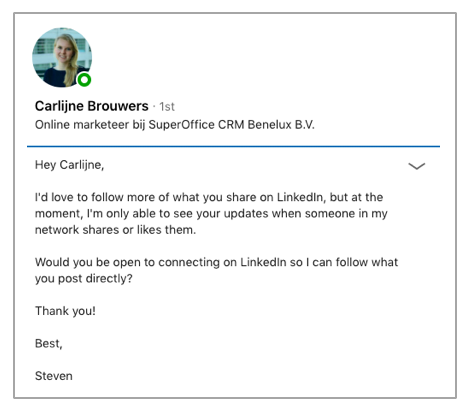
5. Join and participate in LinkedIn groups
LinkedIn has more than 875 million users
As a platform, LinkedIn provides you with advantages to network, ask for referrals and tons more opportunities!
One of the biggest advantages on LinkedIn lies within groups.
There's a lot of groups on LinkedIn and currently, there's more than 1.8 million groups.
According to LinkedIn expert Wayne Breitbarth, only 16% of all LinkedIn users have joined 100 groups.
To find a group, search for a topic of your expertise. Remember, you're not looking to mingle with sales people here, as their job is to sell their product. What you want to do is share knowledge and expertise with potential customers.
If your ideal customer is a small business owner, then search for groups relating to small businesses.
If you sell customer service software, search and join groups that dedicated to customer service managers.
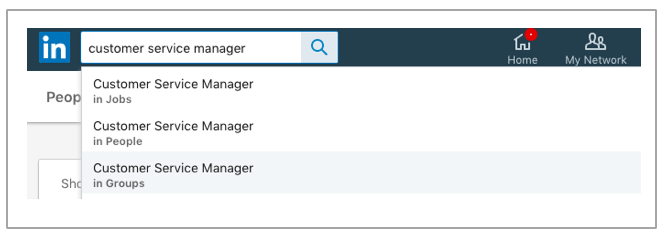
6. Connect with potential customers on LinkedIn
When you begin to contribute to groups, you will find that more people will view your profile.
When someone views your profile, send them an invitation to connect.
But, whatever you do, don't send them one of these - the default, and impersonal, standard invitation:
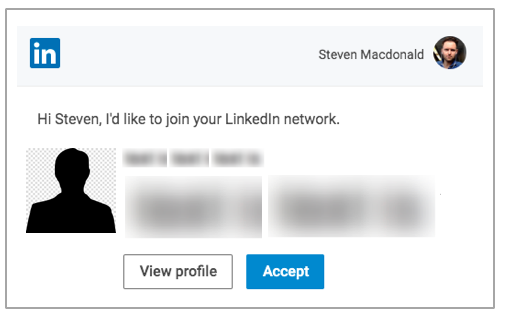
Instead, try something simple like “Hi, thanks for viewing my profile. Would you like to connect on LinkedIn?”.
This is a great way to start a conversation with a potential customer that has shown an interest in what you do.
Another way to connect with potential customers is to reach out to people in the same group. Here’s a template I use for connection requests.
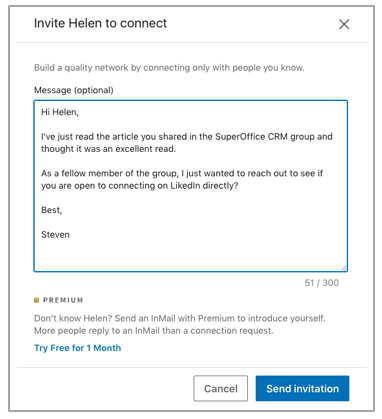
7. Contribute to existing conversations about your brand
Corporate Visions found that 74% of buyers choose the sales rep who first adds value during the buying process.
This is where you come in - adding value.
To add value, implement a social listening strategy and start responding to what people are saying about your brand.
You can do this using searching Twitter to find conversations and to see who is talking about you.
Search for a keyword and then scroll through the feed and start engaging with users simply by retweeting or “liking” their posts, or by responding to suggestions and questions they ask.
In the example below, I searched for "CRM software suggestions" and found hundreds of Tweets!
What is a good CRM software we can look at for small businesses?
What have you used that worked well? Any suggestions?
— Darren (@Darren_Gooden) July 30, 2018
By contributing to these conversations, you add value to a prospects network and get your name on their radar.
8. Provide value by sharing relevant content
More than 50% of B2B buyers seek out information on products and services on social media.
Therefore, you have a great opportunity to create new content based on what people are already searching for.
What’s the most popular type of content they seek out?
The answer is white papers - as 49% of B2B buyers consume white papers when evaluating a technology purchase.
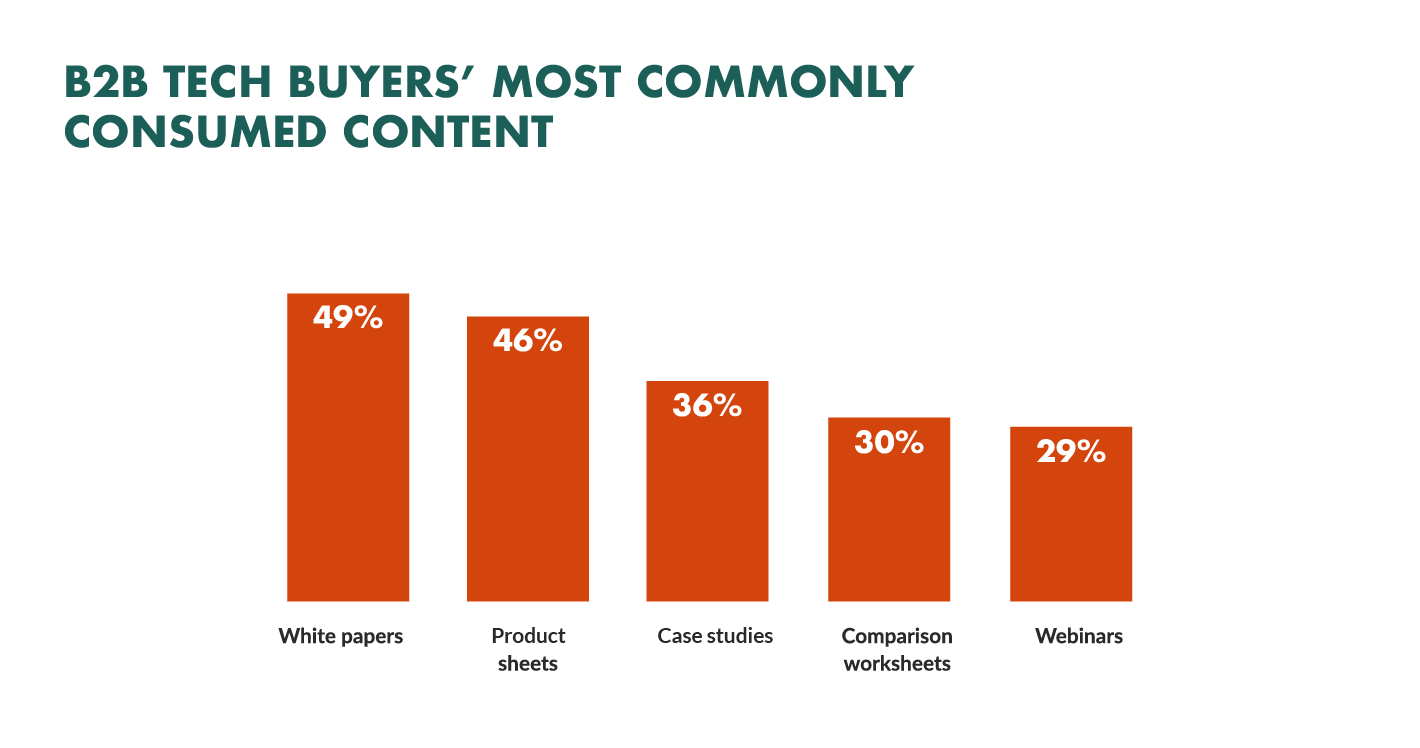
9. Post customer success stories
A study found that 92% of customers read testimonials or online reviews before making a purchasing decision.
As people value social proof, sharing customer success stories can help establish credibility with future customers interested in your company.
If a potential customer can relate with challenge you solved for a existing customer, they could be more inclined to engage with a sales rep and consider your services. This is because people see people like themselves as more credible and trustworthy than others.
10. Share expertise on industry trends
Sharing insight, expertise and commenting on industry trends is a great way to show potential customers you know what you're talking about. Make sure you pick trends that resonate the most with you and your brand - as well as what you think will resonate the most with your customers.
Staying up to date with what’s trending on all social platforms is a great way to capture your customer’s attention, but also come across as relevant and is a great way to differentiate from the competition - who mostly just share their own content (and get zero engagement).
The best part is that you don't have to reinvent the wheel.
Your marketing team is already writing about similar topics - so rather than start from scratch, use what they have already created.
Today, 60-70% of content in B2B organizations is not being used:
- If the conversations you engage in ask for information on best practices, share a blog post from your company blog.
- If a LinkedIn group is discussing product recommendations, you can share a webcast or product demo video.
This is a great opportunity to finally get sales and marketing teams aligned. Together, you can create and share content based on questions, comments and topics that are being posted within your own social network.
Now, there's no limit on what you can share, providing the content adds value to the conversation.
But, there’s no faster way to lose interest from a prospect than sharing irrelevant and self-promotional content.
SuperOffice social selling case study
In 2016, the SuperOffice Dutch sales team hired Jan Willem Alphenaar to train and educate them in the art of social selling.
Prior to the training, social media was used to share marketing content from branded profiles. But, they knew that if used correctly, social could be a powerful lead generation tool. During the training, Jan Willem shared strategies on what type of content to post online, how often and how to use social media to target prospects and turn connections into leads.
Of course, social selling is a long term sales strategy, but during the last several months, we're starting to see some fantastic results, including:
- Stronger alignment between sales and marketing
- A 61% increase in visits from social media channels to our websites
- An increase from 1,000 impressions to 50,000 impressions to our branded profiles
- A 168% increase in business leads from social media channels
More importantly, we’ve seen a 24% increase in new business revenue.
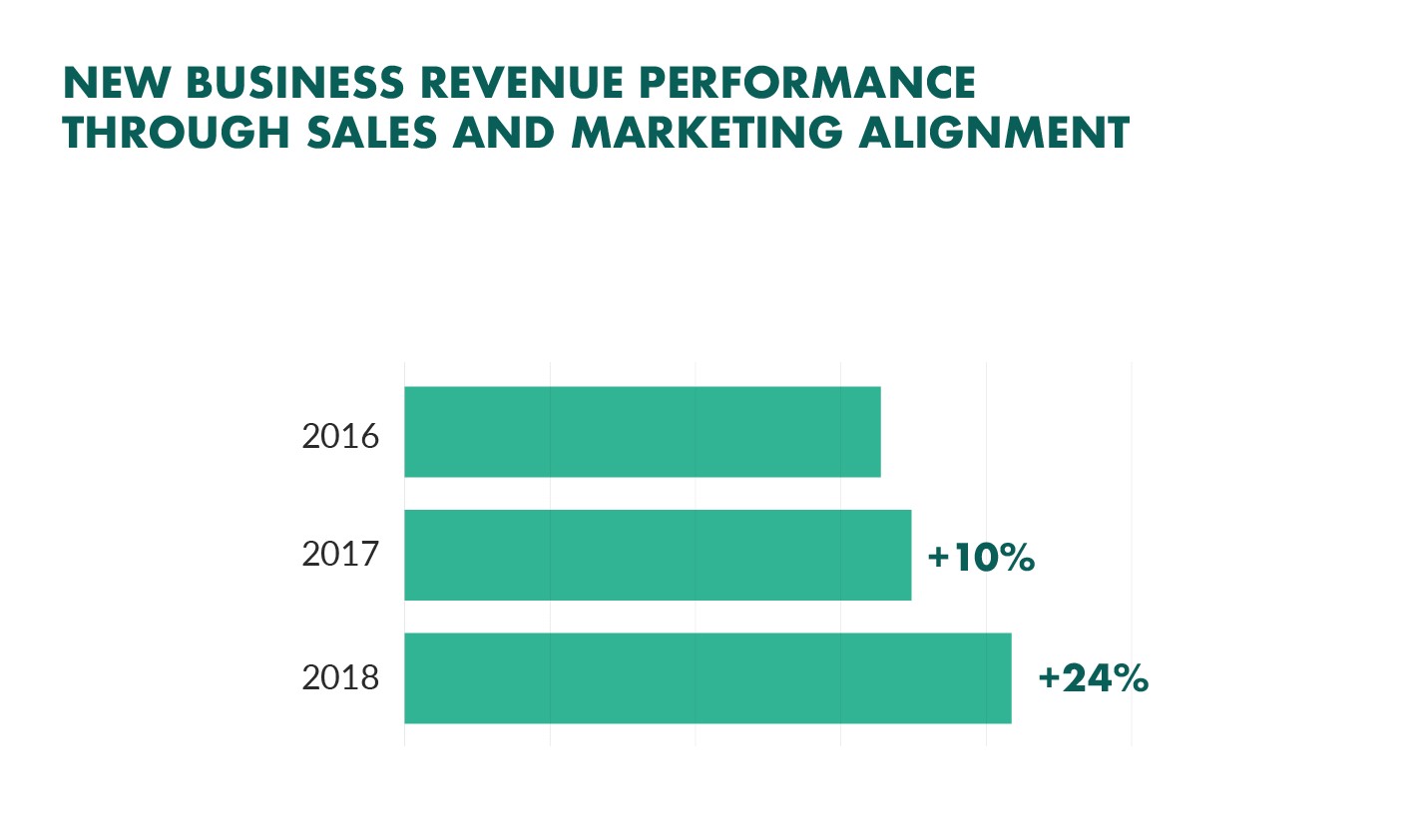
Conclusion
There’s no doubt; social selling will help you sell more.
These 10 social selling tips will help you find and connect with prospects on LinkedIn and Twitter, the platforms where decision makers can be found, but the best results from social selling come when you make it your primary goal to provide value to prospects and build relationships.
Social selling is not a one-time activity and something that should be used alongside existing sales prospecting techniques. While it might be difficult to get started, especially if you're new to social media, the benefits far outweigh the challenges.
One thing is clear: Prospects, customers and competitors all use social media for business. Embrace it and watch your sales grow or ignore it and get left behind. It's that simple.




